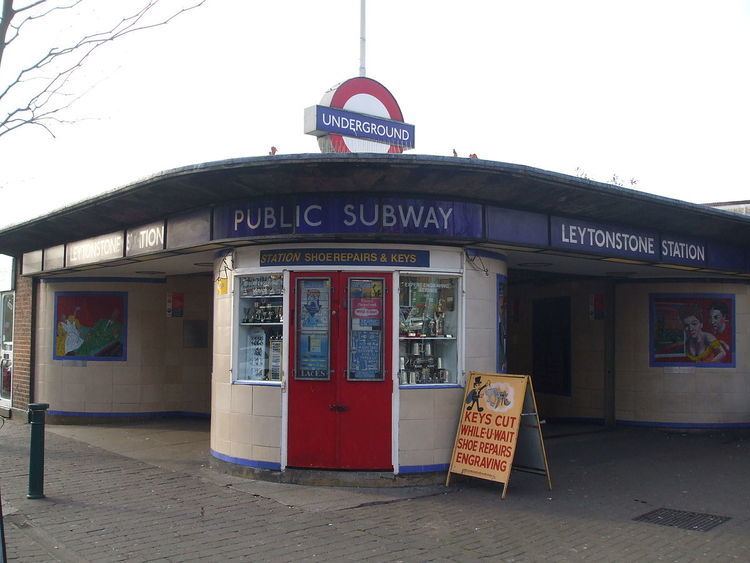Fare zone 3 and 4 2013 10.38 million Opened 22 August 1856 Number of platforms 3 | 2012 10.10 million 2014 11.05 million Phone +44 343 222 1234 | |
 | ||
Address Church Lane, London E11 1HE, United Kingdom Similar London Underground, Leyton tube station, Mile End tube station, Newbury Park tube station, Loughton tube station | ||
Man who attacked at leytonstone tube station convicted
Leytonstone is a London Underground station on the Central line, on the boundary of Zones 3 and 4. Towards London the next station is Leyton, while going east from Leytonstone, the line divides into two branches. On the direct route to Woodford and Epping the next stop is Snaresbrook, and on the Hainault loop it is Wanstead.
Contents
- Man who attacked at leytonstone tube station convicted
- London snow 03 feb 2009 leytonstone tube station
- History
- Notable events
- The station today
- Connections
- References
London snow 03 feb 2009 leytonstone tube station
History
The station was opened by the Eastern Counties Railway on 22 August 1856. In turn it became, from 1862, part of the Great Eastern Railway system and then in 1923 part of the London & North Eastern Railway before being transferred to London Transport in 1947. This formed part of the "New Works Programme 1935 – 1940" that was to see major changes at Leytonstone with the station becoming the junction of the existing Epping branch, newly electrified, with the new tube tunnel running under Eastern Avenue towards Newbury Park. This work saw a complete reconstruction of the station along with the removal of the level crossing at Church Lane and its replacement by an underbridge. The work stopped in May 1940 due to wartime priorities; further delays were caused by the station buildings being hit by a German bomb in January 1944. During the war, the new tunnels were used as an aircraft component factory; the part closest to Leytonstone was a public air-raid shelter.
The station was first served by the Central line on 5 May 1947 when it became the temporary terminus of the line, passengers changing on to steam shuttle onwards to Epping. This ceased on 14 December 1947 with the extension of Underground services to Woodford and Newbury Park.
Notable events
In honour of the centenary of the birth of film director Sir Alfred Hitchcock (born 13 August 1899 in Leytonstone), the London Borough of Waltham Forest commissioned the Greenwich Mural Workshop to create a series of mosaics of Hitchcock's life and works in the tube station. Work was started in June 2000 and the mosaics were unveiled on 3 May 2001.
Three people were stabbed inside the station's ticket hall during the evening of 5 December 2015, with one person suffering serious knife injuries. The Metropolitan Police arrested the attacker inside the station after using Tasers against him. They subsequently announced that the stabbings were being treated as a 'terrorist incident' and a counter-terrorism operation had been launched. Video footage later emerged of the attacker repeatedly shouting "this is for Syria", in reference to the Royal Air Force's bombing of ISIL targets in Syria, which began on 3 December following parliamentary approval.
The station today
The station has three platforms. The centre platform is generally used for through services going westbound, but can be used to terminate trains from both directions. However, due to the configuration of the tracks, trains going eastbound from this platform can only access the Epping branch. Trains needing access to the Hainault branch can do so by shunting west of the station, and then running into the normal eastbound platform via a crossover.
Connections
London Buses routes 66, 145, 257, 339, W13, W14, W15, W16 and W19 and night route N8 serve the station and bus station.
